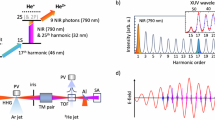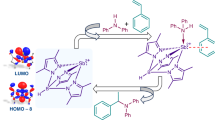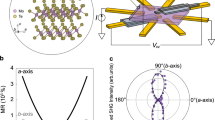Abstract
IT was reported in a previous communication l that, in the course of experiments by Dr. J. S. Badami and me on the spectrum of arsenic by the Paschen hollow cathode discharge in helium, the Lyman series of hydrogen was obtained with remarkable strength, the important feature of the series being the curious intensity anomaly exhibited by the members. Instead of the intensity gradually falling off, a sudden enhancement was observed in that of the 10th and the llth members (σ108,771 and 108,916). Experiments under varying conditions indicated definitely that this intensity anomaly occurs only in the presence of arsenic. The suggestion was made that the energy of excitation of this resonance spectrum is to be sought for in a transfer, by collisions of the second kind, from the excited arsenic atoms. Since sending this report, values of the characteristic energy levels of the neutral and ionised atom of arsenic 2 have become available, and a consideration of these has confirmed the above explanation.
Similar content being viewed by others
Article PDF
References
NATURE, 128, 585, Oct. 3, 1931.
A. S. Rao, Proc. Phy. Soc. (in the course of publication), As II (4p3P0 − 3P2 = 2540; 4p1S0 − 1D2 = 12,504; 4p1D2 − 3P2 = 7555); (unpublished results) As I 4p4S2 = 85,000).
Beutler and Josephy, NATURWISS, 15, 540; 1927.
Duffendack and Smith, Phy. Rev., 34, 68; 1929.
Author information
Authors and Affiliations
Rights and permissions
About this article
Cite this article
RAO, K. Resonance Spectrum of Hydrogen. Nature 129, 869 (1932). https://doi.org/10.1038/129869b0
Issue date:
DOI: https://doi.org/10.1038/129869b0



